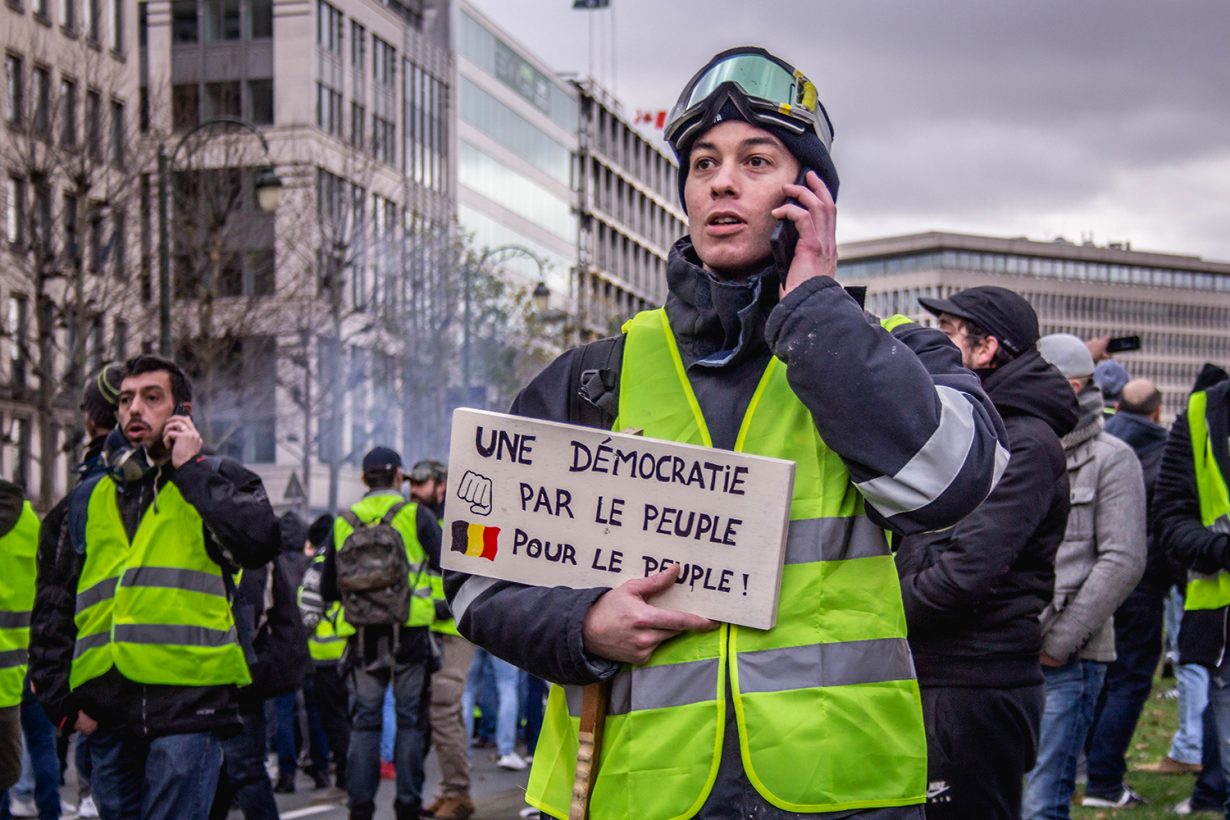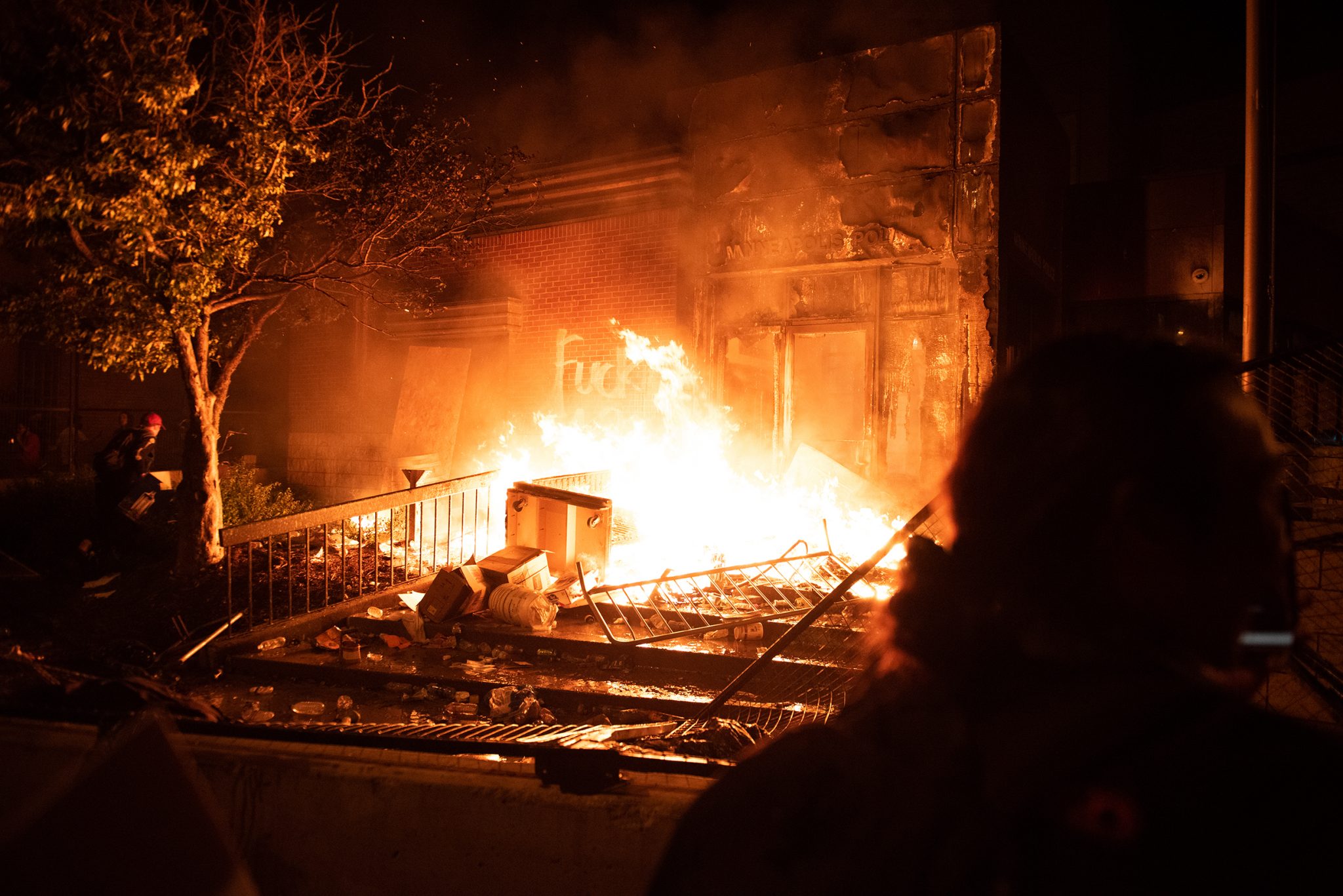Marxist climate-scholar Andreas Malm argues that the time for peaceful protest has passed
Over the past decade, the artworld’s carbon footprint has come under increasingly heavy scrutiny, from its encouragement of friction-less travel between international biennials and art fairs, and museums’ uncritical acceptance of Big Oil’s corporate sponsorship, through to – most recently – the ecologically disastrous consequences of the crypto-art boom. In his latest book, How to Blow Up a Pipeline (2021), academic and activist Andreas Malm suggests that the climate movement should be paying greater attention to the baubles and lifestyles – the ‘luxury emissions’ – of the jetsetting one-percenters.
Malm voices great frustration with the powers that be. Despite an escalating planetary crisis, ‘The commitment to the endless accumulation of capital wins out every time,’ he writes. ‘After the past three decades, there can be no doubt that the ruling classes are constitutionally incapable of responding to the catastrophe in any other way than by expediting it; of their own accord, under their inner compulsion, they can do nothing but burn their way to the end’. Meanwhile, climate activists march, hold pieces of street theatre, deliver demands to ministers – and yet business continues. Is absolute nonviolence fated forever to be the sole tactic in the battle to abolish fossil fuels, Malm wonders. Is there another phase for the climate movement that extends beyond peaceful protest?
How to Blow Up a Pipeline draws an important distinction between property destruction and violence against people – it is to the former that Malm directs his attention, advocating for a new wave of strategic violence that ranges from the deflation of SUV tyres to the sabotage of key fossil-fuel infrastructure. And yet Malm’s diagnosis and suggested cure for the paralysis in contemporary activism leaves me with serious reservations: the heavy risks that any social movement incurs with the escalation of direct action, both in terms of popular perception, and its physical and legal implications. Can the climate movement afford to engage in such a tactics of violent confrontation? ‘Property will cost us the earth,’ Malm insists. ‘Fear for the loss of property is a categorically distinct fear. It pertains to the balance sheet and budget, not the body.’

ArtReview How to Blow Up a Pipeline argues that the deficit of action in response to climate breakdown mirrors a mode of inaction within activism itself. It’s an interesting suggestion, and one that reminded me of Nick Srnicek and Alex Williams’s work on folk-politics – that the recent cycle of struggles often manifests in immediate actions and transient, almost ritualistic gestures, the people and police fated to act out their assigned roles. What did you mean by inaction, in an age – at least prepandemic – of school strikes, Extinction Rebellion and other mass movements around the climate crisis? What is missing in these protests?
Andreas Malm The primary feeling I had about the protests in 2019 – and this book is a product of that moment, which came to such an abrupt end when the pandemic broke out – was excitement. But also frustration, that after all these years – after so many climate disasters, deeply entrenched ‘business as usual’, steeply rising emissions – we are still doing the same thing. Although the protests were on a much larger scale than previously, we were still marching, rallying, petitioning, gently blocking roads and squares. What I saw missing was a more confrontational approach to fossil-fuel infrastructure, and the machines that are destroying the planet.
If you look at the climate movement in the global north, which is what I am primarily concerned with in the book, the contrast between that movement and other social movements which have made a big splash in the global north in recent years is quite extraordinary. I am thinking in particular of the Yellow Vests and Black Lives Matter. There, you’ve seen a very different approach to the police, and to violence and confrontational tactics, and diversity of tactics. There is much to say when you compare the movement for Black Lives and the climate movement.

AR So you’re arguing that a doctrine rules the climate movement, that of absolute pacifism. Can you describe how that has taken hold? It’s a balance of moralism and tactics – one informed by a reading of the history of struggles as fuelled by nonviolent protest.
AM How to explain that contrast with other protest movements? One would need to do a piece of sociological research into movements to tease this out. But I do have a hunch that it is linked to a particular Anglo-American, white middle-class, intellectual, progressive demography that has developed a certain way of thinking about how to effect social change through grassroots movements and has tied itself very firmly to this very pacifistic conception of change. Both the Yellow Vests and BLM have another kind of class basis. The Yellow Vests was generally a working-class uprising in France. BLM comes from young, working Black people with various degrees of dispossession. That might to some extent explain a difference in attitudes.
But that’s probably not sufficient – historically, if you look back at the 1970s and 80s, clearly you can find lots of instances of enraged white people from middle-class backgrounds in Europe or the US who would venture into very militant tactics. So it also has to do with a historical moment: the way that the left and radical social movements have been cut off from a century of experience of how to wage social struggle. In the post-1989, postsocialist – whatever you want to call it – conjuncture, the political models, icons and imaginaries that people in social movements work with do not retain a living memory of intense social struggle that might also include more militant tactics.
If the climate crisis had blown up in the 1960s or 70s, I’m sure that the movement would have developed more radical tactics than what we see now, because at that moment you had a whole galaxy of everything from the Black Panthers to Palestinian resistance to all the anti- colonial struggles that pushed people into a more antagonistic and confrontational way of doing things. But we do not have access to that as a living heritage on the left. It’s something that needs to be reinvented.

AR You propose sabotage, specifically the deployment of property destruction, as a ‘logical, justifiable and effective form of resistance’. What exactly would such resistance consist of; what would it achieve? The deployment of violence is a serious question for all social movements – the escalation of violence within the 2019 wave of protests in Hong Kong, for instance, has not led to a breakthrough for pro-democracy protesters there.
AM Hong Kong is an instance where you have a real contrast between a social movement that exploded in 2019 that took a completely different approach, that acted in total contravention to the model of strategic pacifism. That same year, you saw the same contrast with the uprising in Chile, which started with people smashing the pay machines in subways, or the uprisings against various forms of corrupt neoliberalism in Iraq and Lebanon. Obviously, moving from strictly peaceful protest to more militant tactics does not guarantee that you win. Just as staying with peaceful means is no guarantee either. This all depends on the balance of forces. I’m not saying that I am certain that through shifting to the militancy of property destruction we will win. What I’m saying is that the time has come to consider diversifying our tactics. Because the stakes are too high.
What could potentially be achieved? One, is to try to establish a kind of deterrent against investors: if you continue banking on machines and infrastructure that destroys the planet, you risk finding these wrecked. Though I don’t know how much action you need to establish that as a deterrent; how many refineries you would have to blow up to make that a credible threat. Secondly, it’s important to up the ante through pressure from below on states to adopt the necessary policies – something like going after SUVs or other forms of indefensible luxury emissions would, I imagine, potentially have the effect of placing a stigma on these things, of establishing concretely that this is not an uncontroversial thing to do – that it is not uncontroversial to burn an insane amount of fossil fuels for no good reason at all. These consumption practices would be put into question by our destruction of these machines.
With the BLM movement, from the very beginning, you had an element of property destruction – the whole movement after the murder of George Floyd really took off when people entered the police station in the third precinct of Minneapolis, stormed it and burned it to the ground. That showed people that this kind of violence people are suffering is not their fate, is not beyond the law, beyond their influence – it is something we can enter and put an end to. That worked as a catalyst – it highlighted the sense of paralysis around the constant violence that Black people in the US have been facing for so long. You see a similar paralysis in the climate crisis, where people feel that this infrastructure that is expanding is beyond our influence, is our fate. Militant action on fossil-fuel installations could have a similar effect of puncturing that paralysis – it is not our natural, biological, law-bound fate. Property destruction – targeting the most egregious forms of luxury emissions and other kinds of fossil-fuel infrastructure – could potentially contribute to building popular pressure and delegitimise these practices, pressuring various levels of the state apparatus to start closing these emissions sources down.
There are many differences of course. The murder of George Floyd and its eight-minute film of a cop choking someone to death – now, you will never see a fossil-fuel executive strangling a farmer in Mozambique or a fisherman in Bangladesh, because the violence of fossil-fuel combustion is not interpersonal, it is not face-to-face, it is mediated through the atmosphere. But it really is a form of violence. And it is getting worse, day by day. One thing that separates the climate struggle from many other struggles is that we know that things will get worse. There is no equilibrium or stable baseline of climate breakdown. It is inherent in the problem that it is deteriorating. It is not akin to police violence or social inequality and other problems that can fester for a very long time around an average level that is just about bearable. With the climate crisis, because of how the natural systems work, things are deteriorating rapidly. The climate movement needs to think about its tactics and strategies in relation to that temporal curve, and try to intervene and make use of the moment of intense climate disaster to strike in a more offensive, less defensive manner.

AR Wouldn’t the introduction of violence – despite being confined to property, not other people – receive popular pushback and end up limiting the movement’s ability to raise consciousness? Can the climate movement risk peaceful acts of civil disobedience being tainted with hardline extremism? How do you win mass support when people are broadly unwilling to see themselves as sympathetic to anything that disrupts the social order, especially when property is destroyed?
AM The risk is big. I would never deny that risk is very serious. If someone conducts unintelligent sabotage, that executes an action that cannot be explained as credible, you will face a popular backlash. We saw that with Extinction Rebellion protesting the Underground trains in London, which surely cost it a lot of support. If you go after working-class people and their consumption, or if you attack a power plant that leads to massive blackouts – there are all manner of ways in which this could go wrong.
If we are going to do this, we need to be careful, cautious and smart about it. And I think there are a lot of different principles we should abide by: try to do as little damage as possible to the material interests of working people. If you are going to seriously disrupt someone’s consumption patterns, that should target the richest people, who are guilty of the most insane emissions. If you do that, you have the potential to tap into reservoirs of popular anger about how rich people rule our societies. There is the potential for winning mass support if you combine ecological rage and class hatred that is out there in society, but very rarely articulated politically because our societies are so insanely unequal.
You have to be clever about the timing. At this stage it is important for the climate movement – if it considers property destruction of a more high-profile kind – to time this to events when the more catastrophic consequences of global warming are visible to people. It would be a bad idea to choose a cold winter, which people might unscientifically associate with the opposite of global warming, for instance. You should rather time these high-profile actions to wildfires in Oregon or California or Australia, hurricanes in the US south or the Caribbean, or flooding in the UK. The link to visible climate disaster provides the chance to say: unless we take this infrastructure down, we will see more of these events coming our way.
I think the strategic pacifists are wrong in saying that it is a law that as soon as you engage in property destruction, and more militant tactics that involve violence, you alienate the masses. Look again at what happened after the protests for George Floyd, the amounts drawn into the BLM movement, the historic numbers of who have joined the rallies. But you need to do this in a smart way.

AR Does the argument – perhaps rather provocative, given the climate movement’s shift to focus public attention on the production of fossil fuels rather than ‘personal responsibility’ – that consumption remains part of the problem, invite the depoliticisation of this struggle? In the book, you recount an action in Stockholm in which you joined activists in deflating the tyres of SUVs (the second largest contributor to increasing global co2 emissions in the last decade, you note). Should protesters be going after the jetsetting yacht-class too? What exactly would such actions entail?
AM It makes sense for the climate movement to retain a focus on fossil-fuel production, where it exists – in the UK, this new deep coalmine planned in Cumbria should be a focus for action. But I think that going after the richest people and their consumption is a way of saying this entire class is ruining the planet, with the lifestyle it has adopted and champions, and how it relates to the accumulation of capital and investment that produces their wealth. Questioning the consumption patterns of the ultrarich is not a matter of ‘personal’ responsibility.
The first country this book came out in was France, and apparently inspired by it, a group called La Ronce (which means ‘bramble’) called for actions, including the deflation of SUV tyres as described in the book, tinkering with Total gas stations, as well as unscrewing Coca-Cola bottles in supermarkets. Now, the latter is the kind of action that will piss off more people than required – randomly destroying cola bottles is a rather diffuse form of protest. If you want to go after consumer goods, you need to be very selective. You can have a campaign that says, two years from now, no SUVs will be sold in France, so we will start with neutralising all SUVs we can lay our hands on, starting with the richest neighbourhoods.
There was another action where an XR group went into a wealthy neighbourhood in Bordeaux and deflated 230 SUVs. If you did this consistently on a large scale, you might establish as fact for the richest consumers that if you buy these machines, you will find them deflated. If states will not enact legislation to ban them, we will do it ourselves. But you need to be precise. If you want to achieve something politically, it is precisely on that selectivity that the achievement will be based. If you target everything, you will not get that effect.
There is a temptation when environmentalists start thinking in terms of sabotage that we are against the entire industrial civilisation; all of it is wrong and destructive. The result is that you go against nothing because nothing has been singled out. You need to think about this as a tree where you start by picking the lowest fruits, you start with the most obvious, blatant targets: the commodities owned by the richest people. That said, I still think it is preferable that property destruction would target the SUV producers and sellers or corporations that sell super-yachts and private jets. They have no reason to exist.
Andreas Malm is senior lecturer in human ecology at Lund University. His next book, with the Zetkin Collective, is White Skin, Black Fuel (Verso, May 2021)
Originally published in the May 2021 issue of ArtReview
